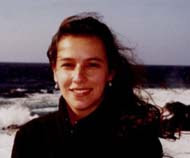Wednesday, November 10, 2010 7:30 - 8:30 pm
Terra Linda High School, San Rafael, Room 207
Physics for future Presidents? Yes, that is a serious title. Energy, global warming, terrorism and counter-terrorism, nukes, cancer, internet, satellites, remote sensing, ICBMs and ABMs, DVDs and HDTVs -- economic and political issues increasingly have a strong high tech content. Misjudge the science, make a wrong decision. Yet many of our leaders never studied physics, and do not understand science and technology. I will .. give you a quick course in what you need to know about the physics of terrorism, nukes, alternative energy, and global warming.
Richard Muller is Professor of Physics at the University of California, Berkeley and Faculty Senior Scientist at Lawrence Berkeley National Laboratory.

















